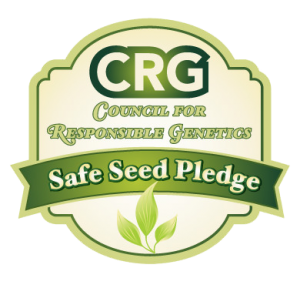Organic Fertilizers - What You Need to Know
There are almost as many types and brands of fertilizer as there are types of plants! It is very confusing to most of us, how are we supposed to know what to do? Well the answer is somewhat easy, the plants can’t tell the difference between most of them.
Nitrogen, Potassium, and Phosphorus
Made up primarily of Nitrogen, Potassium, and Phosphorus (the three numbers on the bag such as 13-9-4) there are also some trace elements added such as calcium which help prevent deficiencies which we may have in our soil. Most soils have plenty of these trace elements so it can be redundant to add more. The best way to know exactly what you need is to have a soil test done by the agricultural extension office in your area.
Compost
That being said, in most gardens, adding some good compost of any type will improve your soil and the microorganisms in the compost will help break down the nutrients already in the soil and make them available to the roots of the plants. This is a critical step before any other additions to your soil. Compost made from Horse manure, leaves, worm castings, mushroom compost, or just homemade from kitchen scraps and yard trimmings all will make a huge difference to your garden.
Commercial Fertilizers
All of the commercial fertilizers will have the ingredients listed on the back of the bag. Always read what it contains before using to make sure you do not add anything you don’t want. Higher numbers of Nitrogen, Potassium and Phosphorus generally are meant to encourage certain types of growth. Nitrogen (the first number) will help grow lots of leaves but can actually hinder growth of fruit and roots. Potassium aids Fruiting and Phosphorus can help promote root growth however, high numbers of any of the three can be too much and can actually kill some plants. For flowering type annual plants, high Potassium numbers will encourage lots of flowers.
Organic vs. Chemical fertilizers
Organic fertilizers are made from plant products such as cottonseed meal or from animal products such as poultry manure or fish emulsion and must break down before the plants can take them up. Chemical fertilizers are made from products such as ammonium nitrate which is a more intense feeding which breaks down almost immediately. Because they are so strong, they can sometimes over feed which can cause burning of the leaves or other detrimental effects. Once the fertilizers break down they are virtually indistinguishable to the plants. The process of taking up nutrients is a chemical reaction and all of the fertilizers become chemicals as they are absorbed. The main difference is in how they are broken down.
Spray on, water soluble types of chemical fertilizers such as Miracle Gro feed through the leaves of the plant. This is a very quick way to feed which was designed for greenhouse commercial growers to feed every time they watered rather than feeding through the roots. We feel that this encourages too much leaf growth and weakens the plant’s root system since it roots are hardly needed. In the long term, it can also build up salt in the soil from the ammonium nitrate which prevents the natural taking up of nutrients.
Worm Castings and Other Natural Soil Conditioners
We always prefer to use worm castings as the worm’s digestive system is a perfect vehicle for the nutrients to break down. They do the work for the plants and excrete the perfect chemical makeup for roots to absorb. Nature is so dynamic that way, it makes its own machines! Castings also actually work within the soil to release other nutrients already there and make them available to plants too. Other composts such as Mushroom or Rabbit compost will also add texture and lighten up heavy clay or sandy soils and add some nutrition too.



